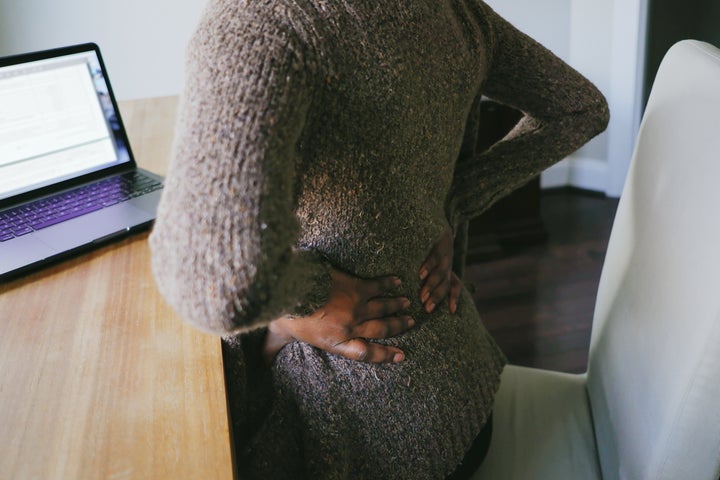
Urinary tract infections are a well-known medical event for many people. Though exact estimates vary ― some sources say more than 50% of women will have a urinary tract infection in their lifetime while others say 10 in 25 women can expect to experience one ― there’s no denying you or someone you know will have one. In fact, UTIs are “the most common infection in the United States,” said Dr. Christine Chu, an assistant professor in the department of obstetrics and gynaecology at the University of North Carolina at Chapel Hill.
But despite how common UTIs are, it can be hard to determine right away if you have one.
For an infection to be considered a UTI, it either occurs in the kidneys, bladder or the urethra, said Dr. Mary Pat Friedlander, a primary care physician and medical director of the University of Pittsburgh Medical Center’s St. Margaret Lawrenceville Family Health Center. “Typically these infections are caused by bacteria that live in the gut and have become introduced into the urinary system,” Friedlander said.
UTIs are more common in women than men because the “urethras are shorter, the distance between the rectum and the vagina and the urethra, they’re very close to each other,” Chu added. So bacteria — both good and bad — often moves from one area to another. The bad bacteria are what cause UTIs; your risk of bad bacteria getting into your urinary tract can increase after sex, if there’s bowel leakage or if you have poor hygiene, Chu said.
It’s important to identify and treat UTIs in order to avoid any discomfort or complications. Here are the biggest red flags to tip you off that you may be dealing with the infection, plus some advice on treating it:
A Burning Feeling When You Urinate
This symptom is one of the most well-known issues. Many people discover they have UTIs based on this uncomfortable sensation alone. The burning may occur every time you pee or it can be sporadic. If you notice any hot, stinging sensation ― even if you don’t think it’s particularly painful ― you may want to get it checked out.
Peeing More Often Than Usual
Chu said frequent urination can also be a sign. Though the frequency varies from person to person, typically urinating more than eight times a day is considered peeing more often than usual, according to the Cleveland Clinic ― especially if you haven’t been drinking more liquids than you normally do.
A Feeling Of Being Unable To Empty Your Bladder
“Sometimes patients will have this feeling of urinary urgency without being able to produce much compared to the urge that they feel,” said Dr. Sandra Hadjinian, a urologist at the University of Washington School of Medicine.
In other words, you may eliminate just a small amount of urine (or none at all) but still feel a strong need to use the bathroom.
Pain In Different Parts Of Your Body
Though not as common as the three symptoms mentioned above, Hadjinian said many folks may experience pain in specific areas.
“Some patients can also have bladder pain or suprapubic pain, that area right up above where the genitals are,” Hadjinian explained.
When it becomes more serious, like a kidney infection, you may experience back pain, she noted. You may also notice general aches and fatigue, Friedlander added. Some may be associated with a low-grade fever.

Early Symptoms May Look Different In Older People.
“Certainly elderly patients may not present with those lower urinary tract symptoms. They might then actually experience more, like even fever could be the first symptom,” Hadjinian said. Older people may also notice issues like confusion or disorientation.
UTIs can be more severe in this population, so it’s important that you get in touch with your doctor if you experience these symptoms.
What Should You Do If You Think You Have A UTI?
Recurring UTIs are most common in two groups: postmenopausal people and college-aged folks.
“Women who are older, so women who are postmenopausal, they just have an inherently increased risk because there’s greater inflammation and the immune response is dampened as they get older,” Chu said. After menopause, folks have a higher risk of recurring UTIs as well.
People who are younger and who are sexually active also have an increased risk, according to Chu.
“If you think you may have a UTI, the best thing is to see your doctor,” Friedlander added. “Your doctor can run a simple urine test in the office to determine if it is likely that you may have a UTI and treat you accordingly.”
Friedlander stressed that if you do have a UTI and are prescribed antibiotics, you should be sure to complete the entire antibiotics course “in order to prevent [the] development of resistant bacteria.”
You should also focus on preventing UTIs. Drinking water is an important way to decrease your risk. In fact, if you drink at least 1.5 litres of water each day, you’ll cut your UTI risk by 50%, Hadjinian said.
She noted that cranberry supplements can also help with UTI prevention. “The way that cranberry supplement works is it makes the lining of the urinary tract, like the urethra and the bladder, less sticky,” Hadjinian noted. So it’s harder for that bad bacteria to get stuck.
Hadjinian said you shouldn’t douche as it can get rid of both good and bad bacteria and lead to over-cleansing, which can cause problems in itself. Friedlander added that proper wiping techniques — so, wiping from front to back — can help lessen your risk of getting a UTI, as well as not holding in your urine when you have to use the bathroom. Additionally, Friedlander said the practice of peeing after sex is a good idea to help lessen your risk of a UTI.
Though things can be done to reduce your risk of getting a UTI, there is also no shame in getting one — they happen to more people than you’d think.